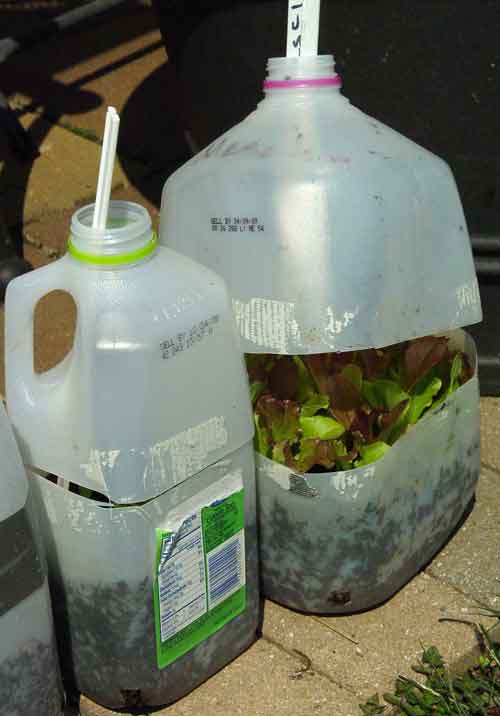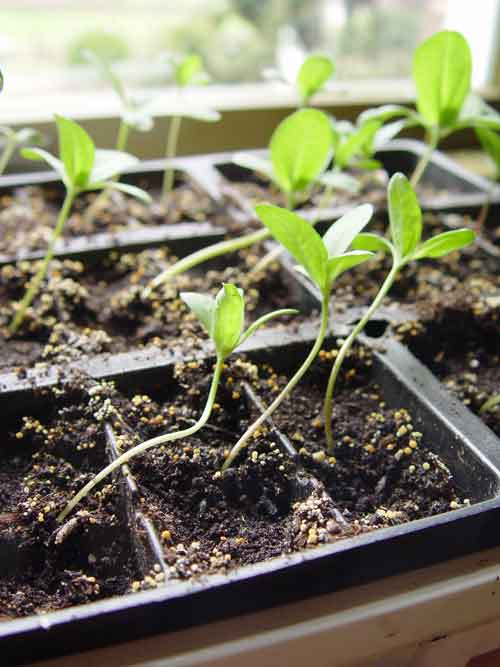Making Sense of Seeds
Shopping for seeds can be confusing. Not sure what different terms on your seed packs mean? Read this article to learn more.

Seedlings already up and growing inside plastic containers.
Most gardeners know about the two main ways to start seeds: either plant them directly into the soil, or start them early indoors to and transplant later. Much less familiar is “winter sowing” —starting seeds early outdoors with just enough protection to allow germination.
It doesn’t work for all vegetables or flowers, but winter sowing is easy enough and sufficiently low-cost that it’s worth a try for varieties that don’t mind a bit of cold. The technique gives at least a few weeks head start to the season without the lights, soil spills, watering issues and other possible pitfalls of indoor seed starting.

Winter-sown seedlings aren’t leggy like these and don’t need “hardening off” outside like indoor-grown seedlings.
In most cases, seeds can be winter-sown in containers 4 to 8 weeks before they’d normally be sown unprotected in the ground. Experiment with start times. The germination and cold-hardiness of seeds varies widely from species to species. Expect the seeds to take longer to germinate outside than inside.
Window wells, empty beds along a heated wall and cold frames made out of lumber and plastic or glass are all good places to set winter-sowed containers—at least in the early going.
As the weather warms and the seedlings grow, the containers can be moved more out in the open, such as on a deck or patio.
After 1-2 sets of true leaves appear, raise the tops of the containers on mild days to allow more light to reach the tiny seedlings. Close them at night. If the weather is dry, sprinkle the containers occasionally to keep the container mix damp.
Winter-sown plants won’t need to “harden off,” unlike with indoor-grown seedlings. When the time comes to plant unprotected in the garden, the containers will be filled with young seedlings that are already acclimated to the air and light of the outside.
Some of the best annual flowers for winter sowing: Sweet alyssum, snapdragons, California poppy, larkspur, annual phlox, blue woodruff, calendula, flax, cornflower, browallia, larkspur, linaria, nigella, and Joseph’s coat.
Start these annuals indoors until temperatures rise: Cosmos, diascia, sunflowers, ageratum, marigolds, nicotiana, celosia, cleome, and zinnias.
Some of the best perennial flowers for winter sowing: Aster, astilbe, baby’s breath, gaillardia, liatris, coreopsis, gaura, penstemon, phlox, black-eyed susan, coneflower, Shasta daisy, yarrow, carnation, coralbells, baptisia, hollyhock, salvia, veronica.
Some of the best vegetables and herbs for winter sowing: Parsley, mesclun, lettuce, Swiss chard, cabbage, broccoli, cauliflower, kale, collards, spinach.
Start tender herbs and vegetables indoors until temperatures rise, including: basil, dill, tomatoes, eggplant, and peppers.